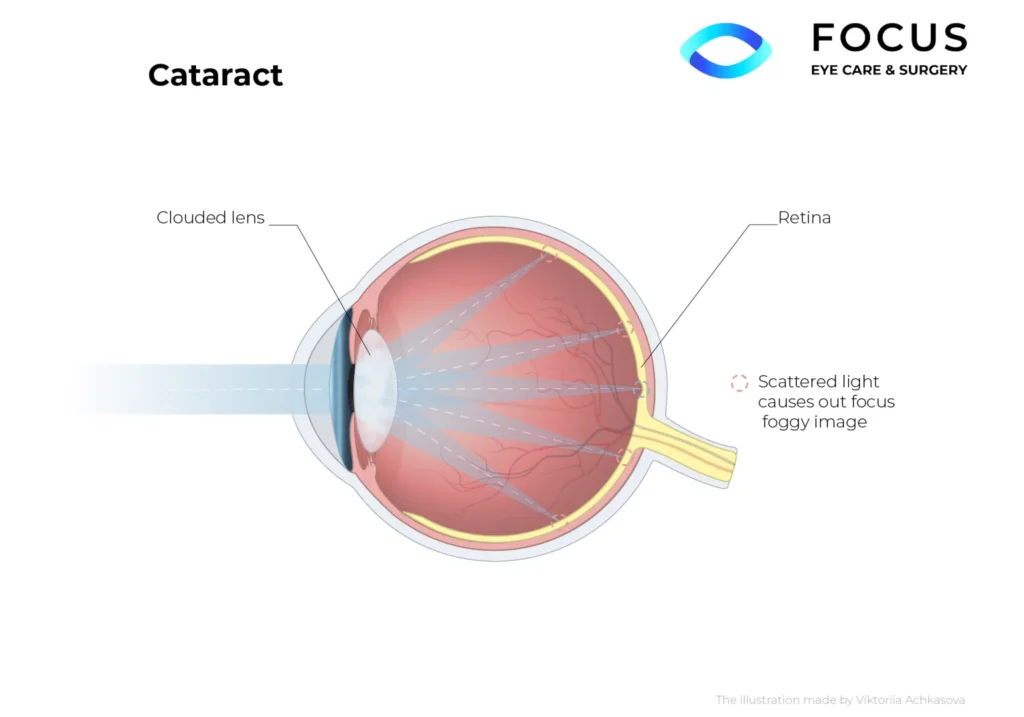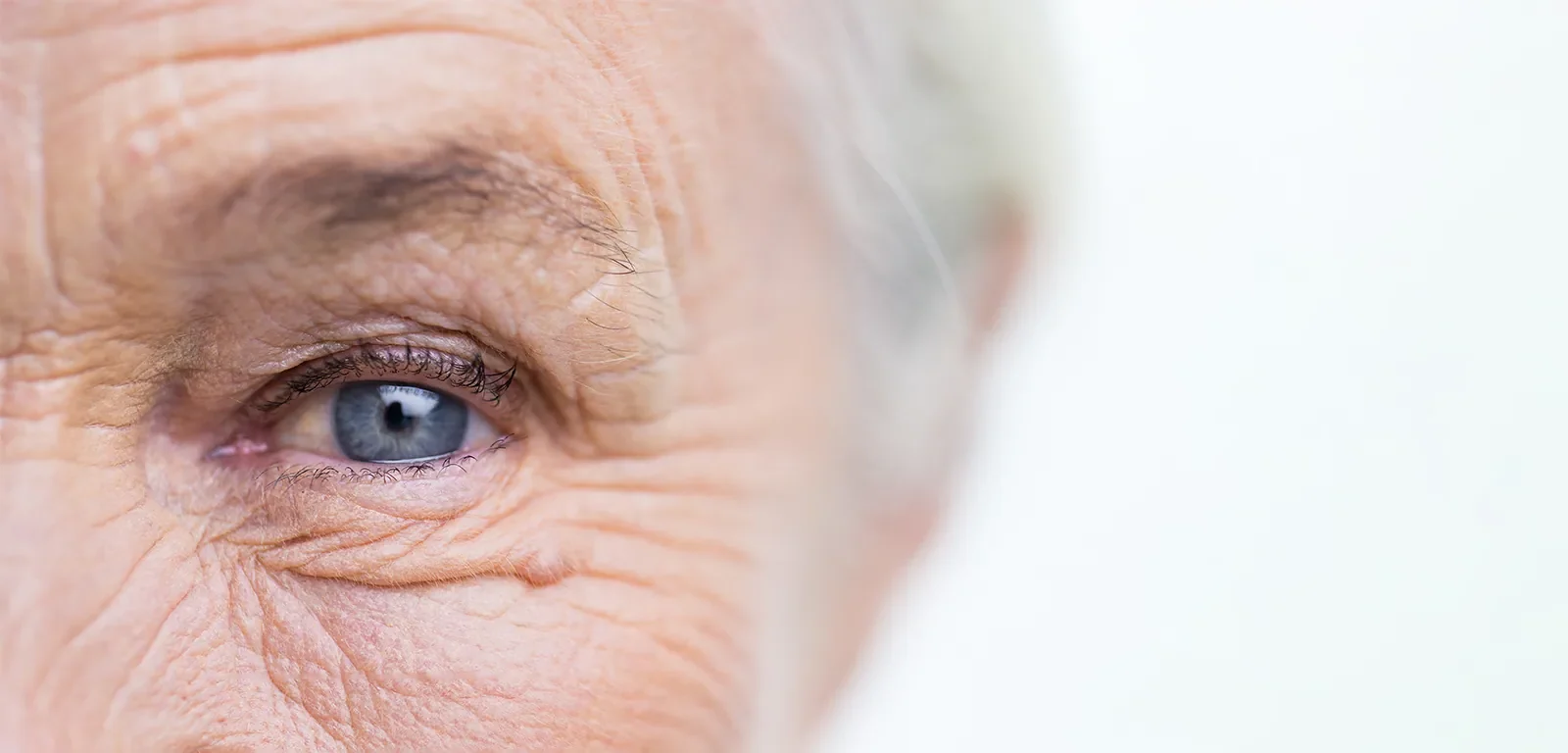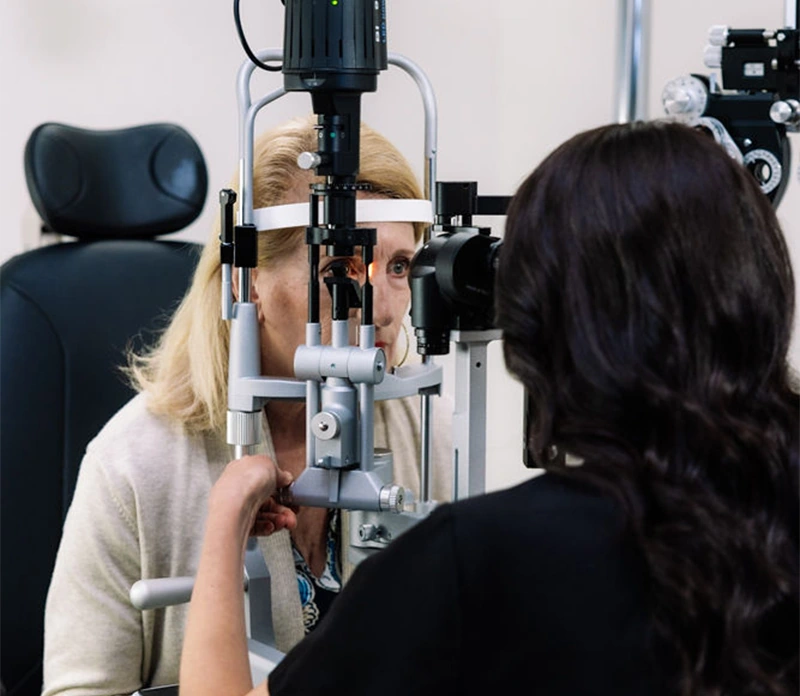Cataracts
Personalized, Top Quality Eye Care in Queens
Cataracts are a common age-related condition that cause the lens of the eye to become cloudy, leading to blurry vision and impacting daily activities like reading and driving. At Focus Eye Care, cataract surgeon Dr. Neelofar Ghaznawi offers advanced cataract treatment using laser-assisted surgery and personalized lens implants, helping patients from Queens, Long Island, NYC, and beyond regain clear, sharp vision and improve their quality of life.
What are Cataracts?
Cataracts are a condition where the eye’s natural lens becomes cloudy, leading to blurry vision and making it harder for light to pass clearly through to the retina. In a healthy eye, the lens is both clear and flexible, allowing us to focus on objects at varying distances much like a camera lens. However, starting around age 40, the proteins in the lens begin to break down and clump together. This clumping causes cloudy patches known as cataracts, which gradually impair vision.
Cataracts are an expected part of the aging process. According to estimates by the Amercian Academy of Ophthalmologists, up to 70% of Americans will develop a cataract by the time they turn 75. Additionally, over 20.5 million individuals in the U.S. who are over 40 years old are currently
Trusted Source
Three Things Patients Should Know About Catarats
American Academy of Ophthalmology
Go to Source
affected by cataracts.
Though the condition progresses slowly at first, it eventually reaches a point where it significantly affects daily life, such as reading, driving, or recognizing faces, requiring surgical intervention to restore clear vision.


Symptoms of Cataracts
Cataracts typically develop slowly, with early symptoms that are often subtle and easy to overlook. Over time, however, the lens of the eye becomes progressively cloudier, and these changes can start to interfere with everyday tasks like reading or driving. Common symptoms of cataracts include:
- Blurry or Cloudy Vision: Vision may appear as though you’re looking through a foggy window, making it difficult to see details clearly.
- Faded or Dull Colors: Colors may lose their brightness and vibrancy, sometimes appearing yellowish or muted.
- Increased Sensitivity to Light: Bright lights can feel overwhelming, and you may experience more glare than usual, especially from headlights at night.
- Halos Around Lights: You may notice halos or starburst effects around lights, particularly in low-light situations or at night.
- Difficulty Seeing at Night: Tasks like driving in the dark can become particularly challenging due to reduced contrast and increased glare.
- Double Vision in One Eye: Double vision, or seeing overlapping images, may occur as cataracts worsen.
- Frequent Prescription Changes: If your glasses or contact lens prescription
Trusted Source Cataracts Cleveland Clinic Go to Source changes frequently , it may be a sign of developing cataracts.
If you are experiencing any of these symptoms, it’s important to have a comprehensive eye examination to determine if cataracts are the cause and to discuss potential treatment options with your eye care professional.
What Causes Cataracts?
Cataracts usually form as a natural consequence of aging, often beginning to develop in individuals during their mid-50s or later. As we age, the proteins in the eye’s lens start to break down, leading to clouding that gradually obstructs vision. Although aging is the primary factor, there are several additional risk factors that can increase the likelihood of cataract formation.
Risk Factors for Cataracts:
- Diabetes: Elevated blood sugar levels can contribute to changes in the eye that promote cataract development.
- Obesity: Being overweight has been linked to a higher risk of cataracts.
- Smoking: Tobacco use significantly raises the chances of developing cataracts, possibly due to its impact on cellular health.
- Previous Eye Injuries: Trauma or injury to the eye can accelerate the clouding of the lens.
- Family History: A genetic predisposition can make cataracts more likely.
- Frequent UV Light Exposure: Long-term exposure to the sun’s ultraviolet rays without adequate eye protection can increase the risk of cataracts.
- Certain Medications: Prolonged use of some medications, especially corticosteroids, may heighten the risk.
Understanding these risk factors allows individuals to take proactive steps, such as wearing UV-blocking sunglasses, managing health conditions like diabetes, and avoiding smoking, to reduce the risk of cataracts or seek early treatment if symptoms develop.

In the early stages, cataracts may cause only minor vision changes that can often be managed by making simple adjustments, such as increasing lighting or updating your eyeglass prescription. However, these solutions are temporary, as cataracts will continue to progress and further cloud the lens, eventually making it challenging to carry out daily activities like driving or reading.
The only effective and permanent treatment for cataracts is surgery. Cataract surgery is a widely performed procedure with a
Trusted Source
Is Cataract Surgery with Vision-Correcting IOLs Safe?
American Refractive Surgery Council
Go to Source
high rate
of success. During cataract surgery, the cloudy natural lens of the eye is removed and replaced with a clear artificial intraocular lens (IOL). This surgery is highly successful in improving vision and can significantly enhance a patient’s quality of life, allowing them to return to their regular activities with restored clarity and reduced visual limitations. Your eye care professional can help determine the best time for surgery based on how cataracts are affecting your day-to-day life.
Why Choose Focus Eye Care for Cataract Surgery?
When considering cataract surgery, Dr. Neelofar Ghaznawi’s extensive background in both general and specialized eye care makes Focus Eye Care an excellent choice. Dr. Ghaznawi, a board-certified ophthalmologist and cornea specialist, combines a deep understanding of eye surgery procedures with advanced skills in implanting specialized intraocular lenses that correct both astigmatism and presbyopia. Her focus on patient education and customized treatment planning ensures that each individual receives top-tier care, tailored to their unique needs. Dr. Ghaznawi’s active participation in leading professional organizations, alongside her role as an assistant clinical professor at Mount Sinai, reflects her unwavering dedication to excellence in the field. All surgeries are performed at our convenient location in Queens, ensuring a seamless and accessible experience for our patients.

Frequently Asked Questions About Cataracts
While cataracts cannot be fully prevented, there are steps you can take to support your eye health and potentially delay their development. Wearing sunglasses that block UV rays, maintaining a diet rich in vitamins and antioxidants, and avoiding smoking can all help promote healthier eyes. Regular eye exams are also key for early detection and effective management of cataracts.
Modern cataract surgery is highly safe, and complications are rare. However, as with any surgical procedure, there are some potential risks, including infection, inflammation, halos around lights, or, in rare cases, retinal detachment. Your surgeon will discuss these potential risks in detail during your consultation to ensure you are well informed.
Yes, once cataracts have progressed to a point where they significantly impact vision, cataract surgery is considered medically necessary and is covered by most insurance plans, including Medicare. The cost of standard monofocal intraocular lenses (IOLs) is usually covered, but if you opt for advanced or premium IOLs, you may incur some additional out-of-pocket costs. Additionally, manual cataract surgery is covered by insurance, but there may be additional fees for laser cataract surgery. We will go over the full cost of your customized treatment plan during your cataract surgery consultation.
No, cataracts do not come back after surgery because the natural cloudy lens is replaced with an artificial lens. However, some patients may experience a condition called posterior capsular opacification (PCO), often referred to as a “secondary cataract.” This occurs when the membrane that holds the IOL becomes cloudy. Fortunately, this is easily treated in-office with a quick laser procedure that restores clear vision.
Cataract surgery becomes necessary when the clouding of the lens interferes with daily activities and quality of life. If tasks like driving, reading, or recognizing faces become challenging, it’s time to consider surgery. Consulting with your eye doctor will help determine if it’s the right time for you.
Whether or not you need glasses after cataract surgery depends on the type of intraocular lens (IOL) you choose. Standard monofocal lenses correct vision at a single distance, which may mean you still need glasses for reading or other activities. Advanced IOLs, such as multifocal or extended depth of focus lenses, can address a range of vision needs, potentially reducing your reliance on glasses.
Yes. Cataracts are a part of the eye’s natural aging process. Vision correction procedures like LASIK and PRK do not prevent the development of cataracts.


Contact Us
If you’re experiencing symptoms of cataracts or have questions about your eye health, the team at Focus Eye Care is here to help. Dr. Neelofar Ghaznawi and our experienced staff are dedicated to providing compassionate, high-quality care for patients in Queens, Long Island, NYC, and the surrounding New York City area.
To learn more about cataract treatment options or to schedule a consultation, contact us today. Clear vision is closer than you think.
The doctors at Focus Eye Care & Surgery have reviewed and approved this content.
Page Updated:
1American Academy of Ophthalmology. Three Things Patients Should Know About Catarats. Available: https://www.aao.org/newsroom/news-releases/detail/three-things-patients-should-know-about-cataracts. Accessed May 13, 2025.
2 Cleveland Clinic. Cataracts. Available: https://my.clevelandclinic.org/health/diseases/8589-cataracts. Accessed October 1, 2024.
3 American Refractive Surgery Council. Is Cataract Surgery with Vision-Correcting IOLs Safe? Available: https://americanrefractivesurgerycouncil.org/refractive-surgery-procedures/cataract-surgery-with-vision-correcting-iols/is-cataract-surgery-with-vision-correcting-iols-safe. Accessed October 1, 2024.
4 American Refractive Surgery Council. Is Cataract Surgery with Vision-Correcting IOLs Safe? Available: https://americanrefractivesurgerycouncil.org/refractive-surgery-procedures/cataract-surgery-with-vision-correcting-iols/is-cataract-surgery-with-vision-correcting-iols-safe. Accessed October 1, 2024.


